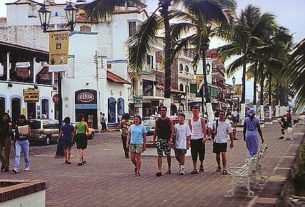If you are a patient with heart disease, you should still be able to enjoy travel. Knowing your limits and what to do when symptoms present can be lifesaving. If you have known athlerosclerosis (clogging of the arteries of the heart with cholesterol and plaque), make sure that you’re in good condition before you undergo any physical stress associated with vacation travel. If you have had an uneventful stress test or negative angiogram (results that show good blood flow to the heart) within the past year, you can feel secure as long as you remain on your prescribed medication.
If, within the last six months, you have had a successful procedure to restore blood flow to the heart (bypass surgery, stent placements, or angioplasty), you should feel comfortable traveling. As with any major surgery, bypass surgery patients should wait two weeks after their procedure before undertaking any major travel.
Most of these procedures remain effective for much longer (5-15 years) if you stay on your medication and don’t smoke, but as a precaution, patients should be evaluated for early complications or failures six months after their procedure.
If you have congestive heart failure or a history of arrhythmias (irregular heartbeats) you can travel as long as your condition is controlled with medication.
Diabetes and heart disease can be a little more complicated; therefore, we recommend that all diabetics consult with a cardiologist to determine their fitness to travel.
Anyone with any concerns about these conditions should consult a physician prior to departure. Other significant risk factors for heart disease include:
- 1) Smoking history (greater than 10 years)
- 2) High blood pressure
- 3) Age over 65
- 4) High cholesterol
- 5) Morbid obesity
Anyone with the above conditions should carry the following information with them while traveling:
- 1) Recent laboratory studies
- 2) Recent history and physical exam results
- 3) Recent EKG, echocardiogram, and treadmill stress test, if available
- 4) Copies of any invasive studies or procedures such as angiograms, stent(s), or bypass surgery
- 5) List of your current medications and any medication allergies
- 6) Telephone number of your primary care physician and cardiologist
If you do travel, knowing what symptoms to watch for may be helpful. The following is a list of symptoms that should prompt you to seek medical attention:
- 1) Irregular pulse or one unusually fast (greater than 100 beats per minute) or very slow (lower than 50 beats per minute)
- 2) Shortness of breath
- 3) Light-headedness
- 4) Unusual fatigue
- 5) Unusual swelling of the legs and/or feet
Classic symptoms of a heart attack would be pain described as “a heaviness or a pressure sensation in your chest.” The pain can radiate to your neck or jaw and even down the left arm. Sweating, nausea, and/or light-headedness are often present.
Less classic symptoms may include a “stomach ache” that does not respond to antacids but goes away when you sit down and rest.
Coronary artery disease occurs about 10 to 15 years later in women. More than 240,000 American women die each year from it. It is important to be able to recognize that women’s symptoms of heart attack may differ from those of men. They might include:
- 1) generalized feelings of illness
- 2) unusual fatigue
- 3) shortness of breath
- 4) sharp back pain in the mid to lower quadrant
Diabetics with heart disease sometimes feel no chest pain, but only dizziness, fatigue, and/or shortness of breath.
Copyright© 2007 MedToGo, LLC. Not for unauthorized publication or reproduction without the consent of MedToGo, LLC.

